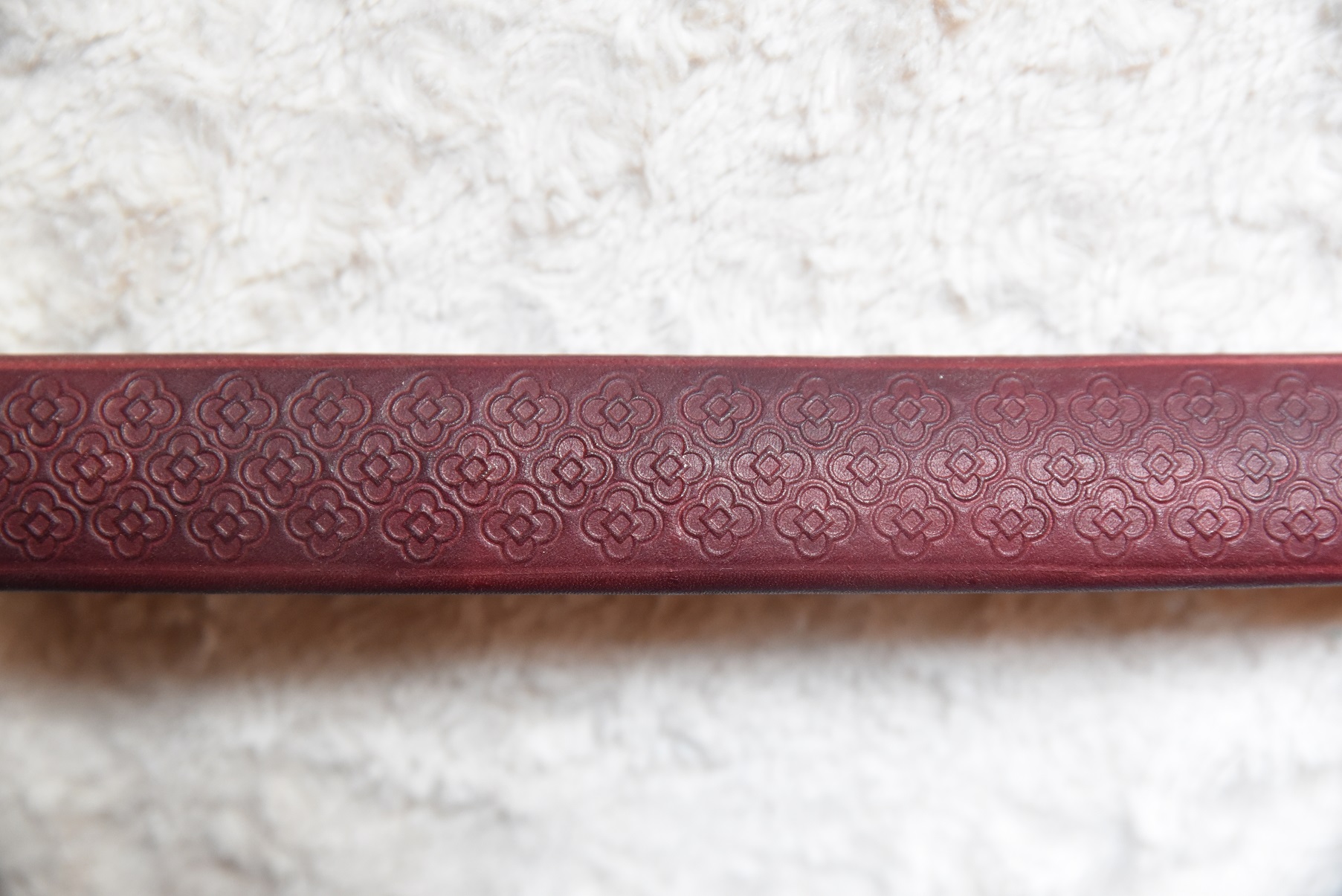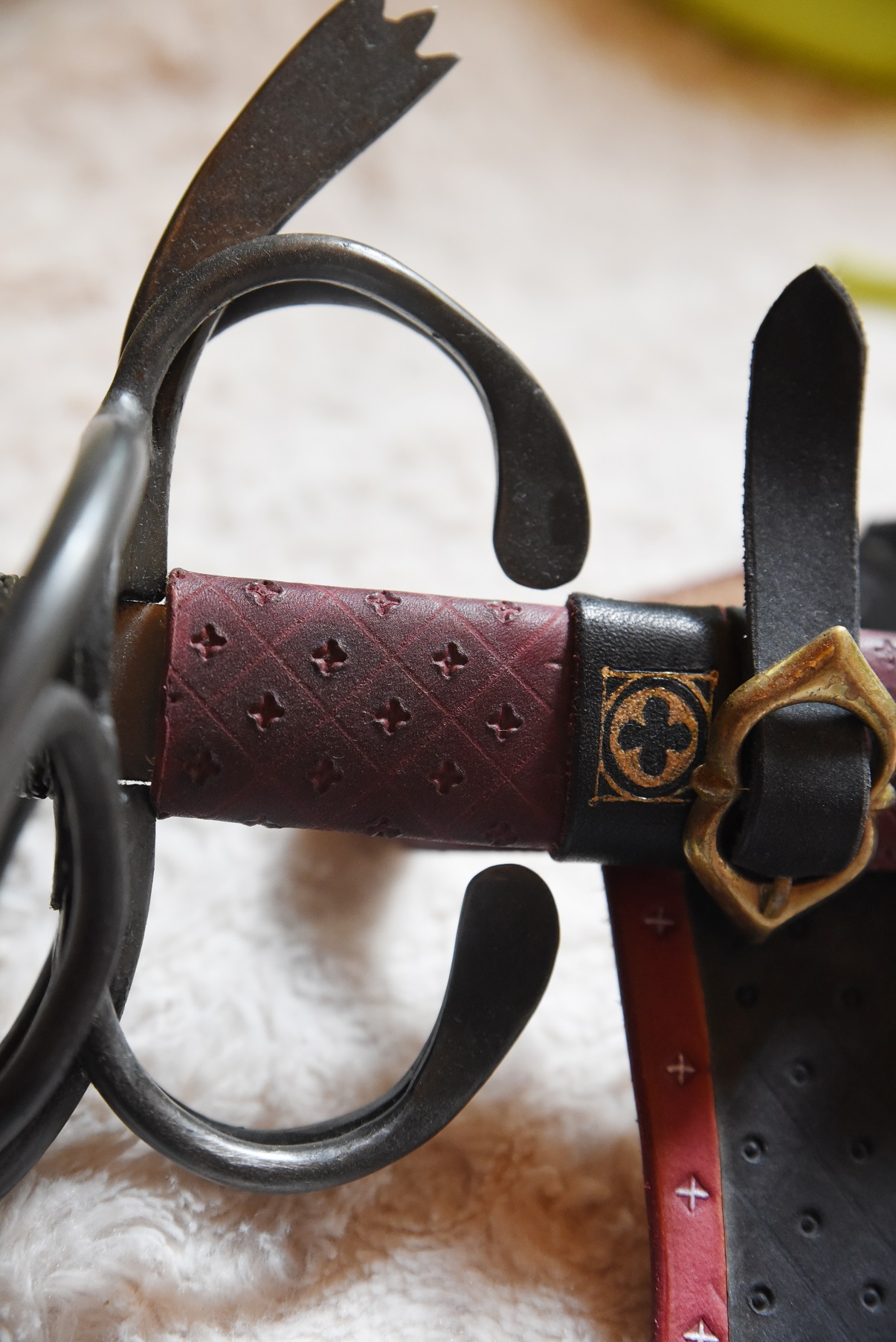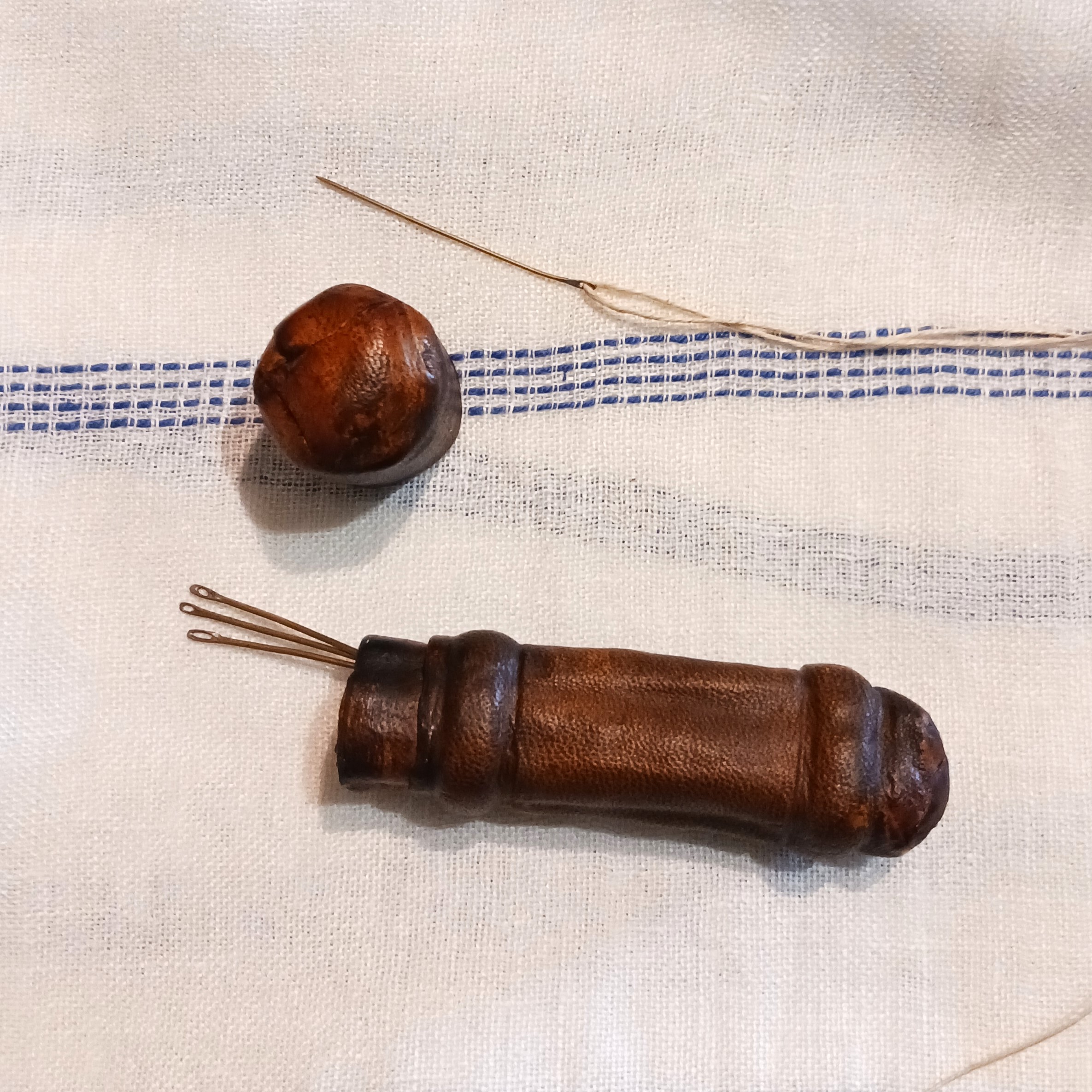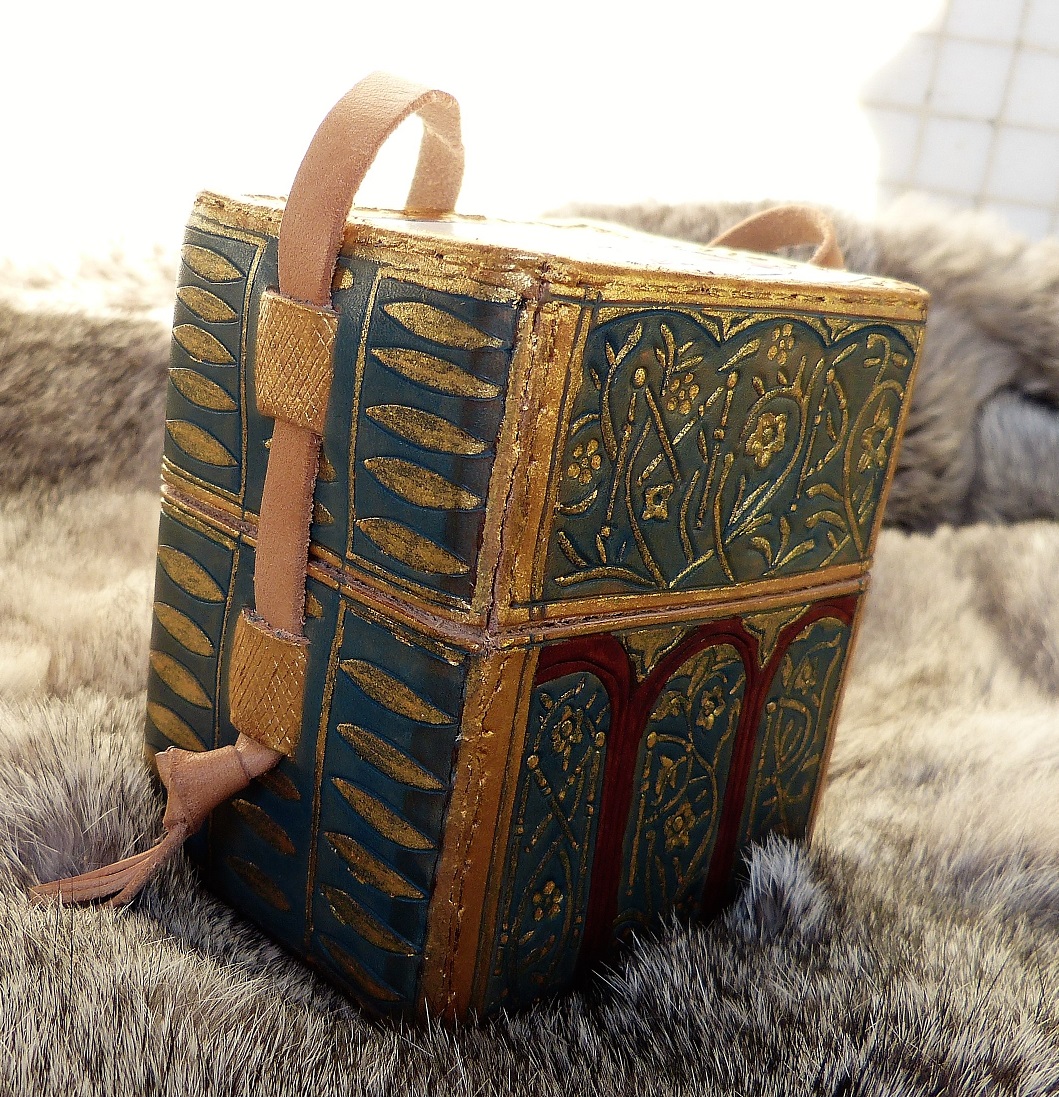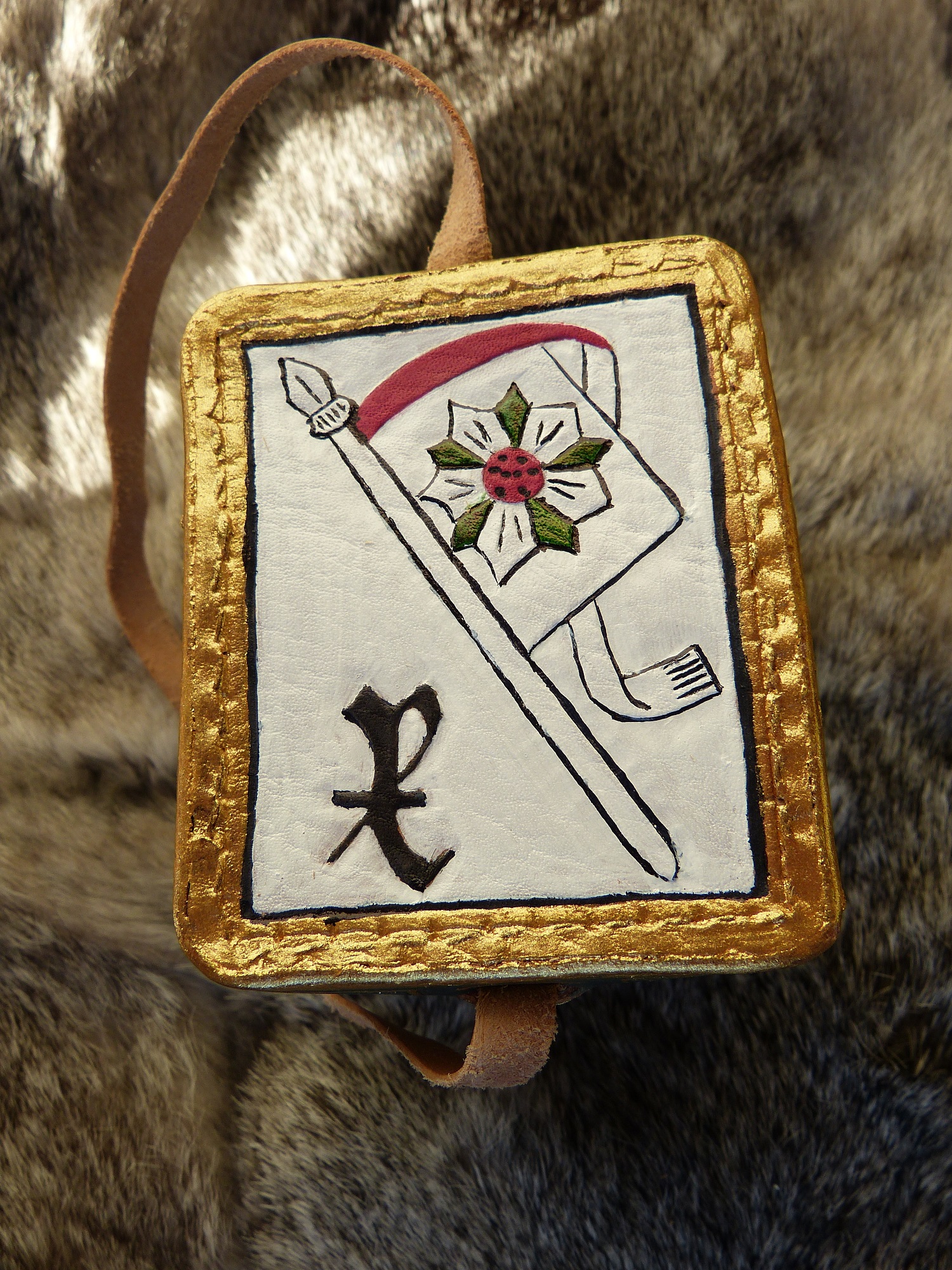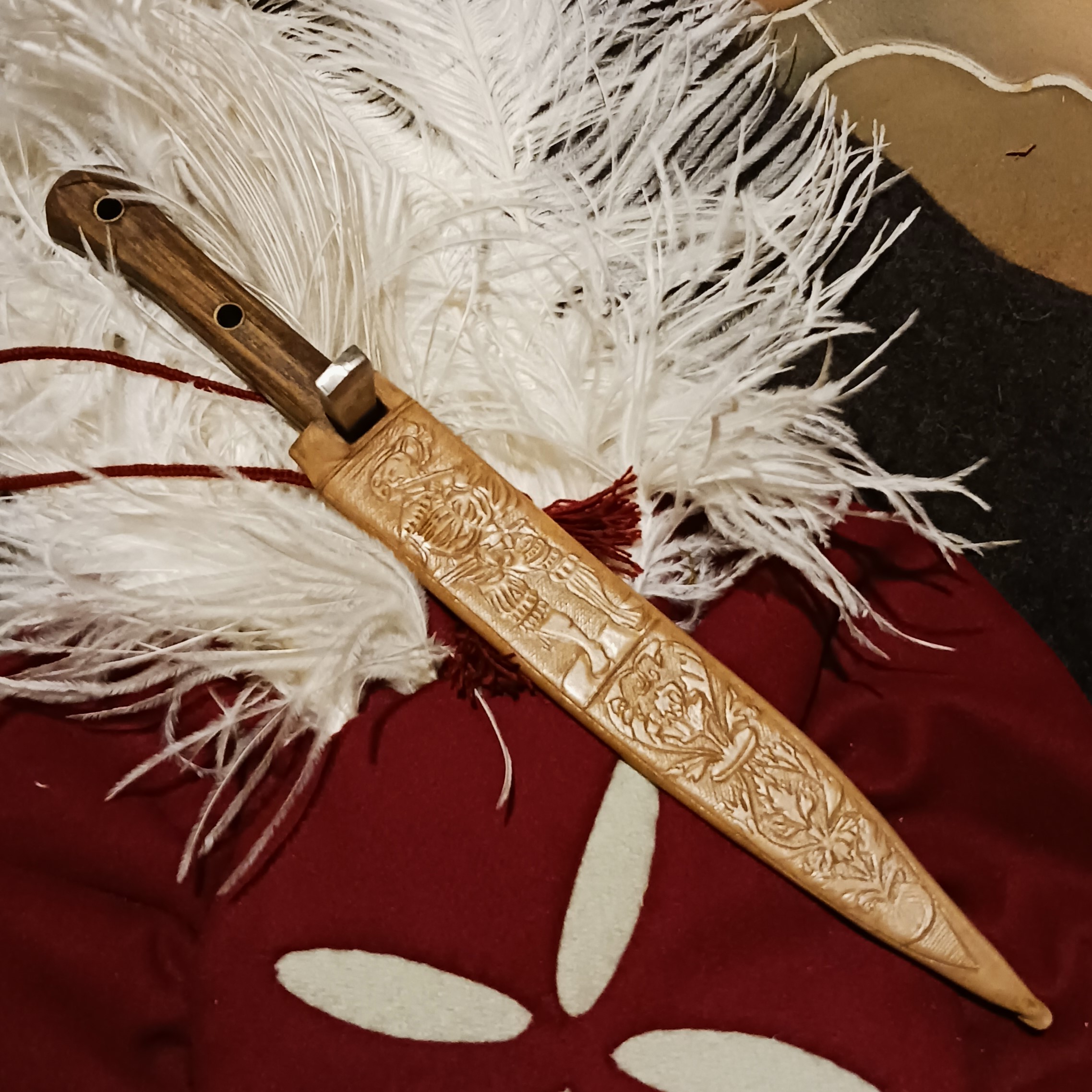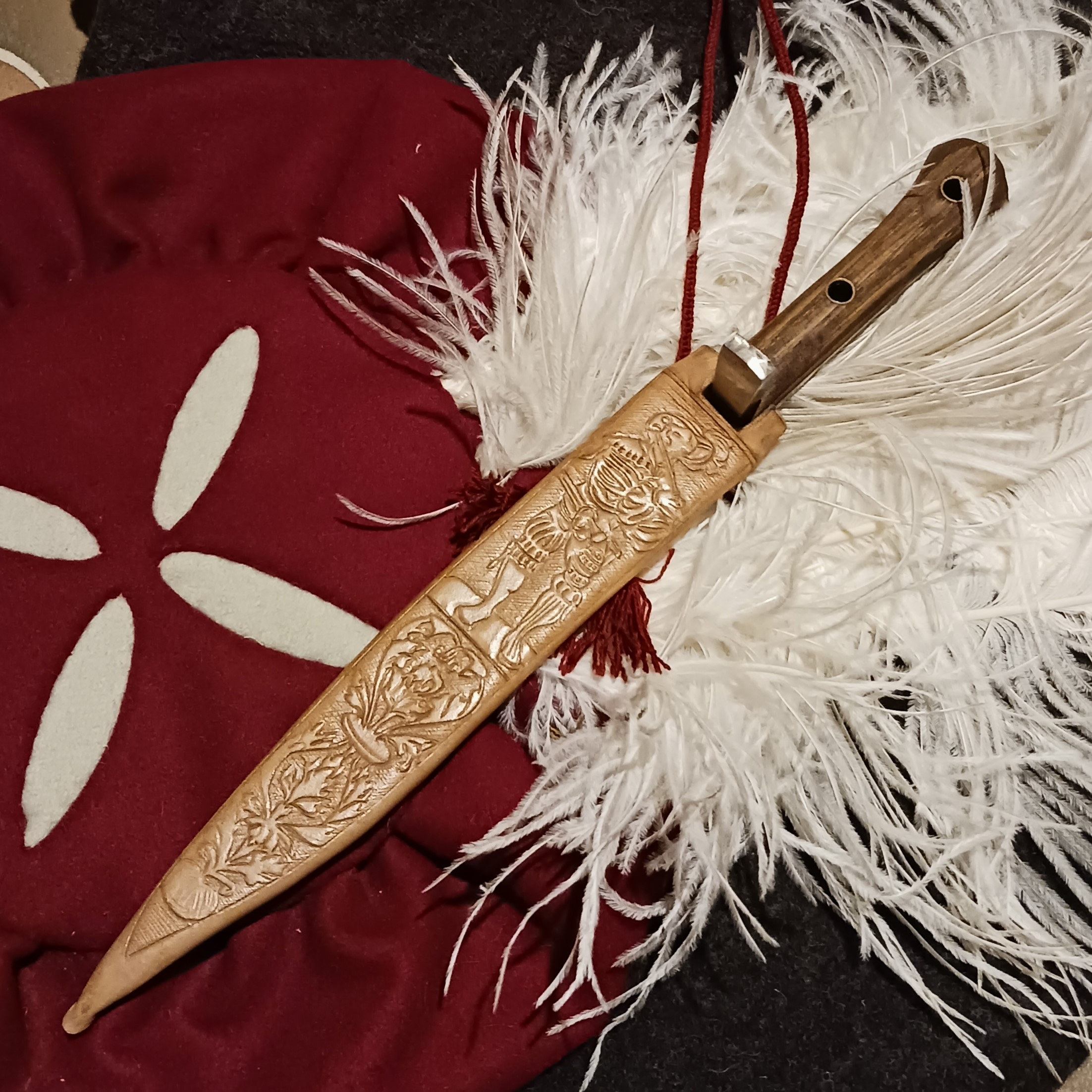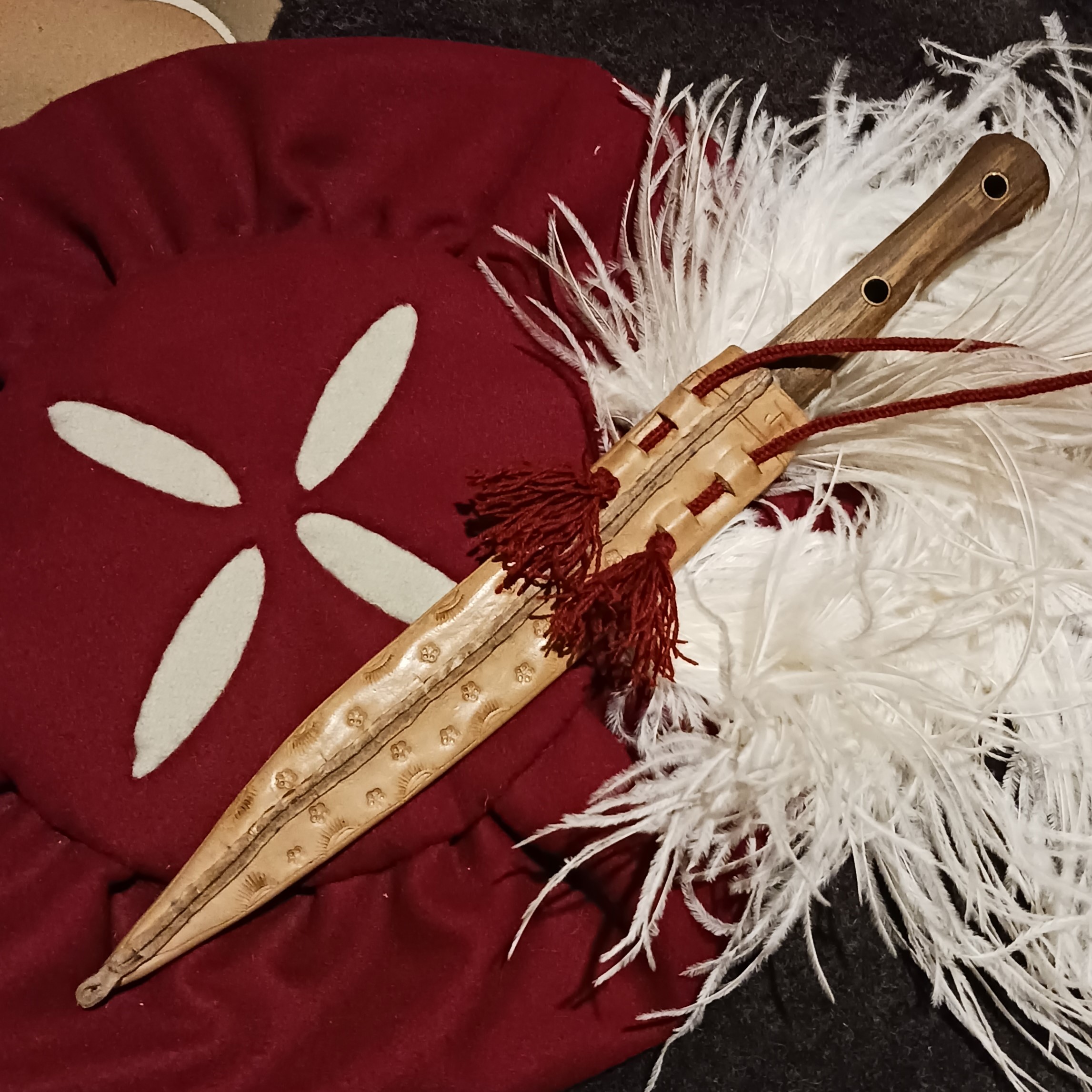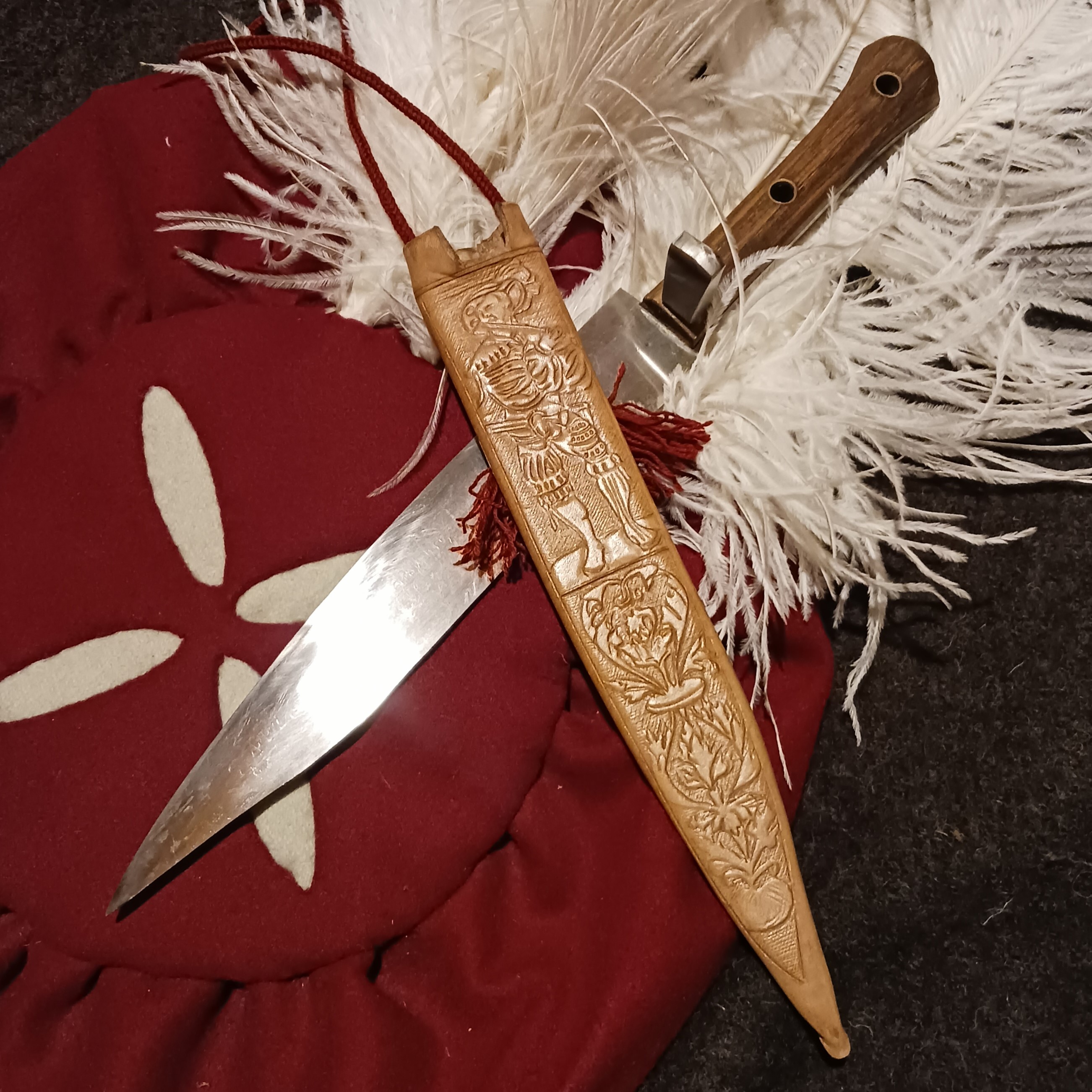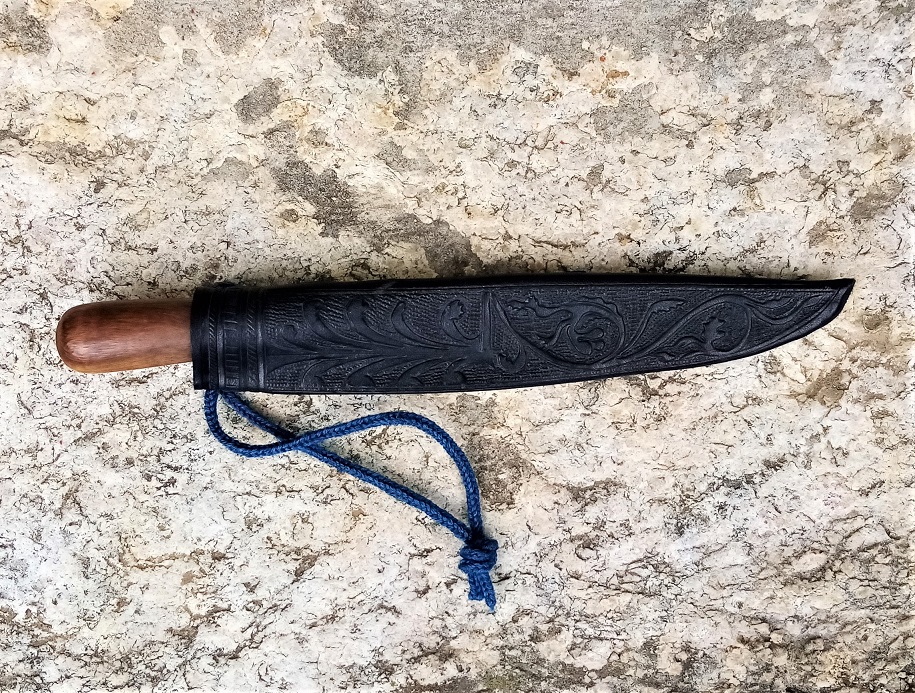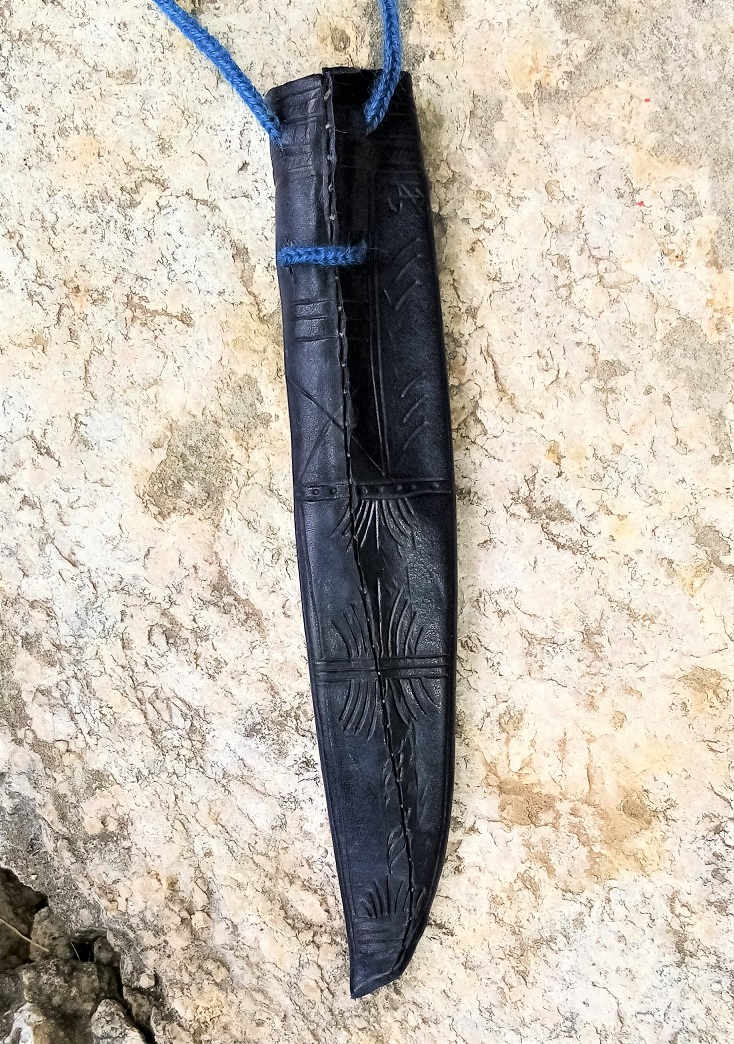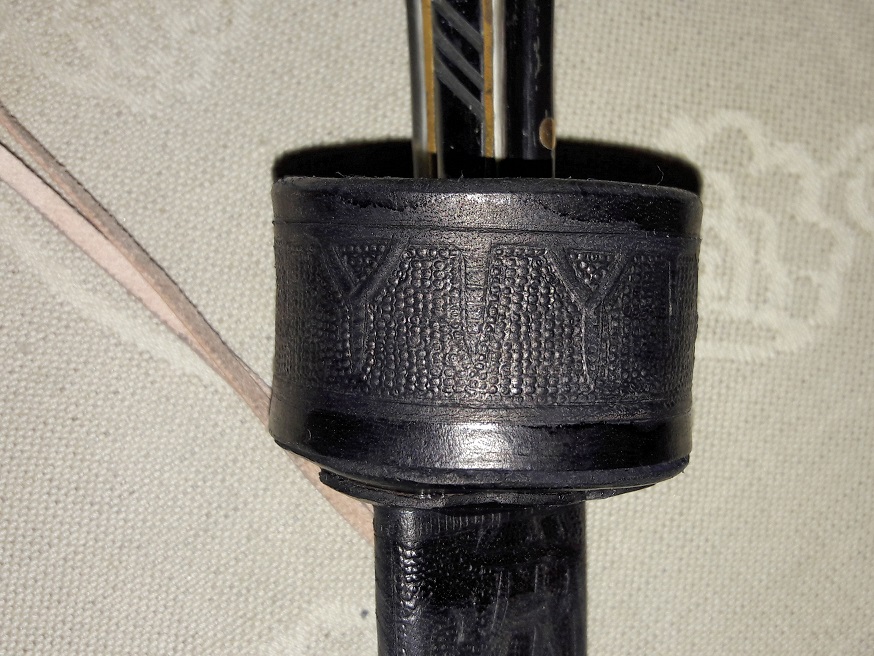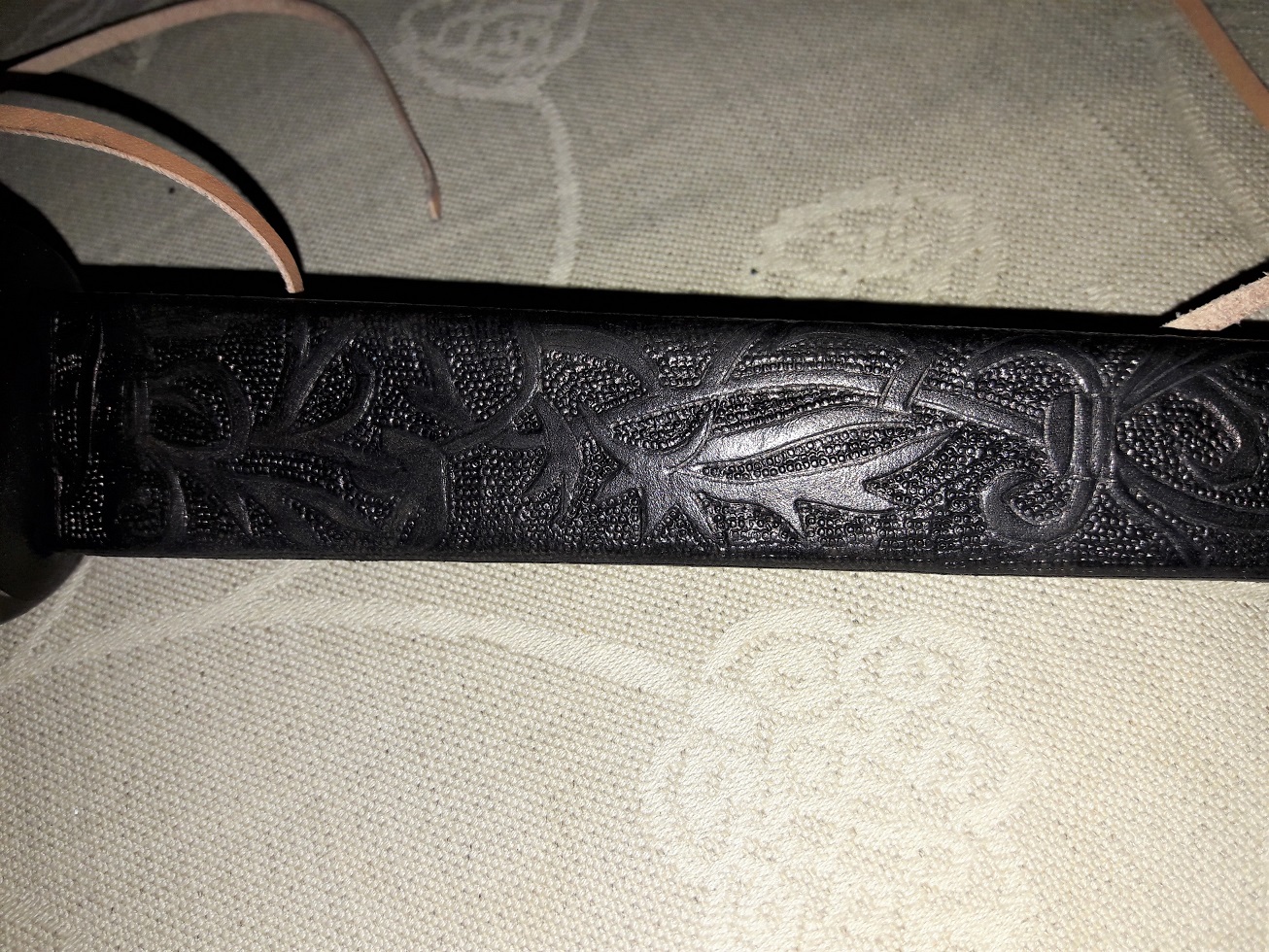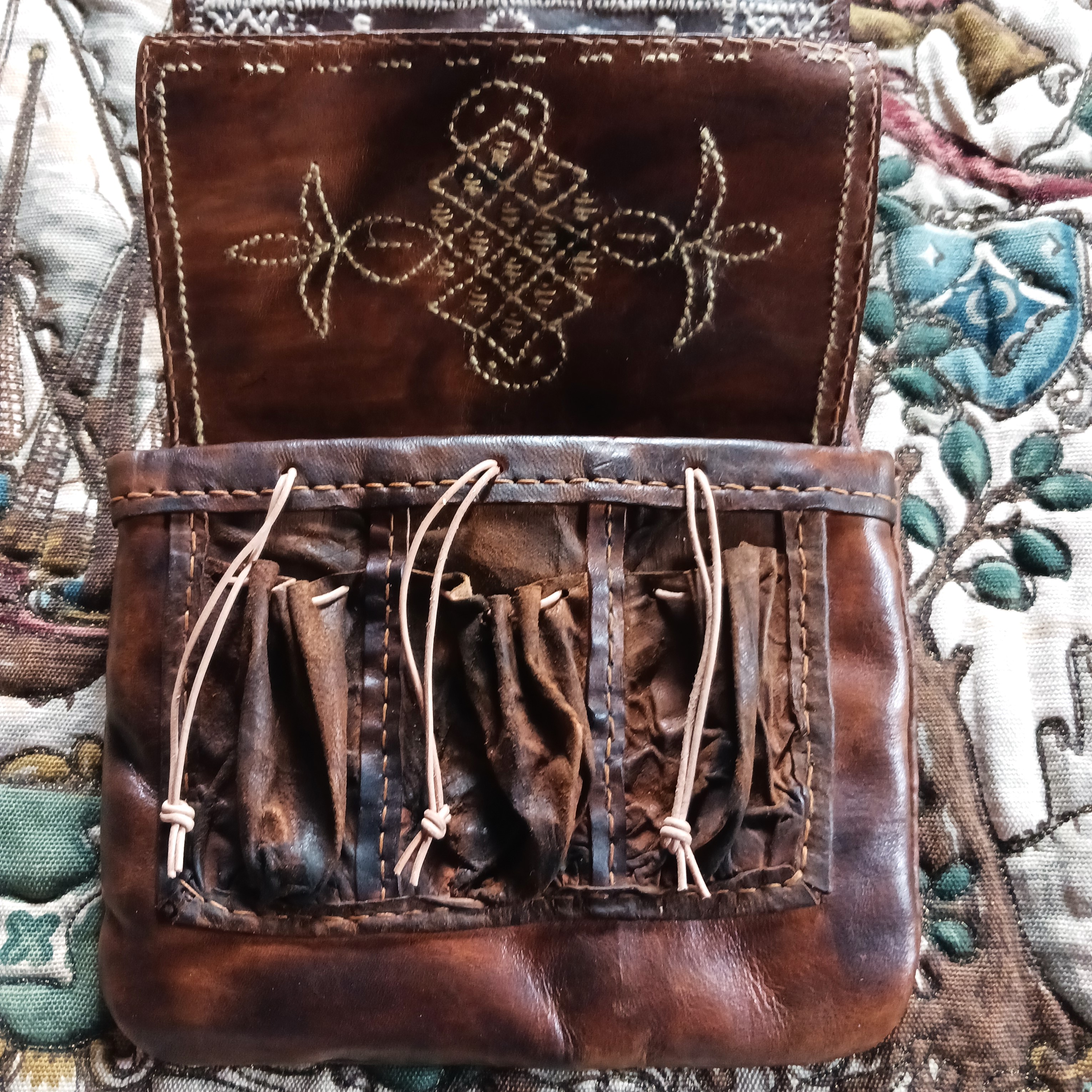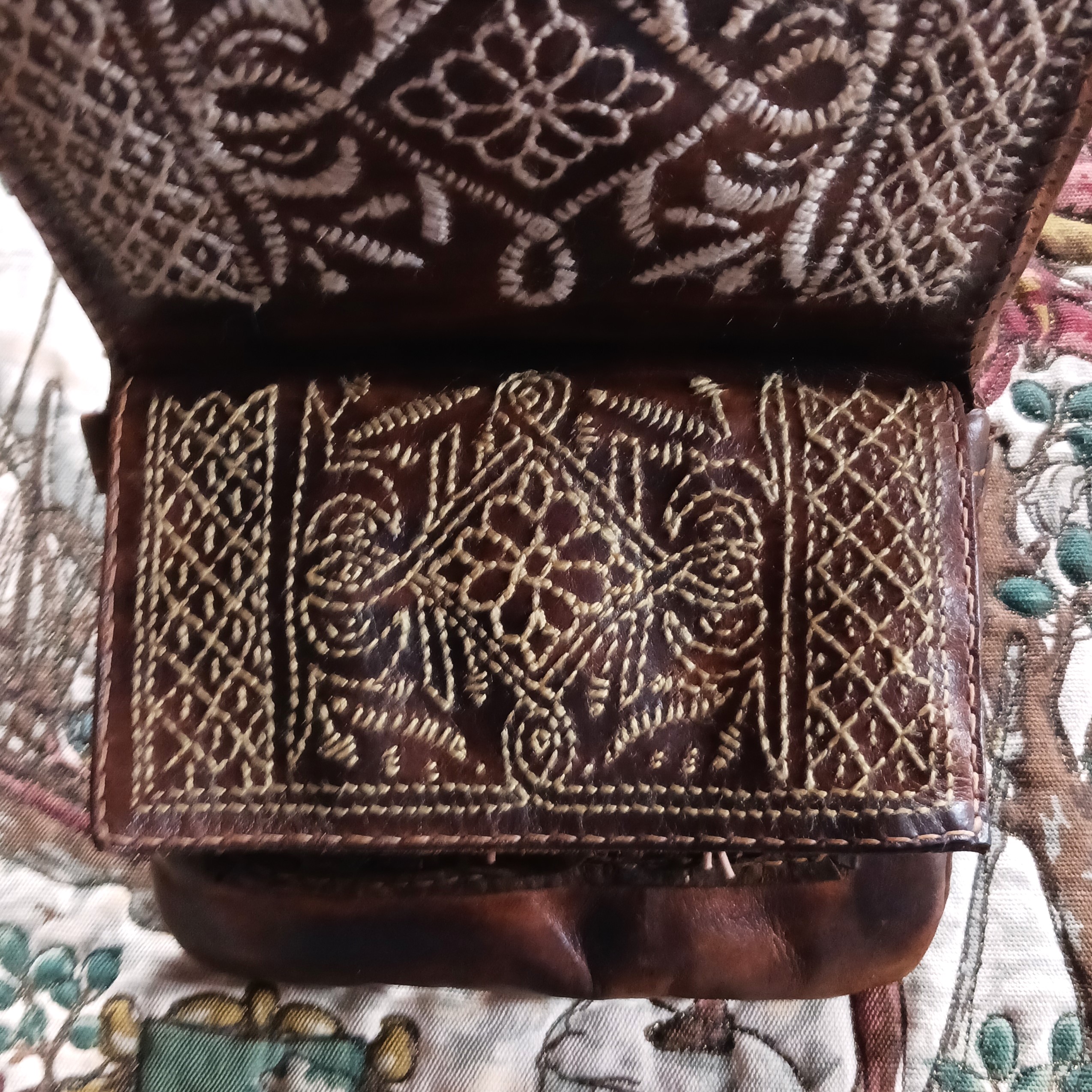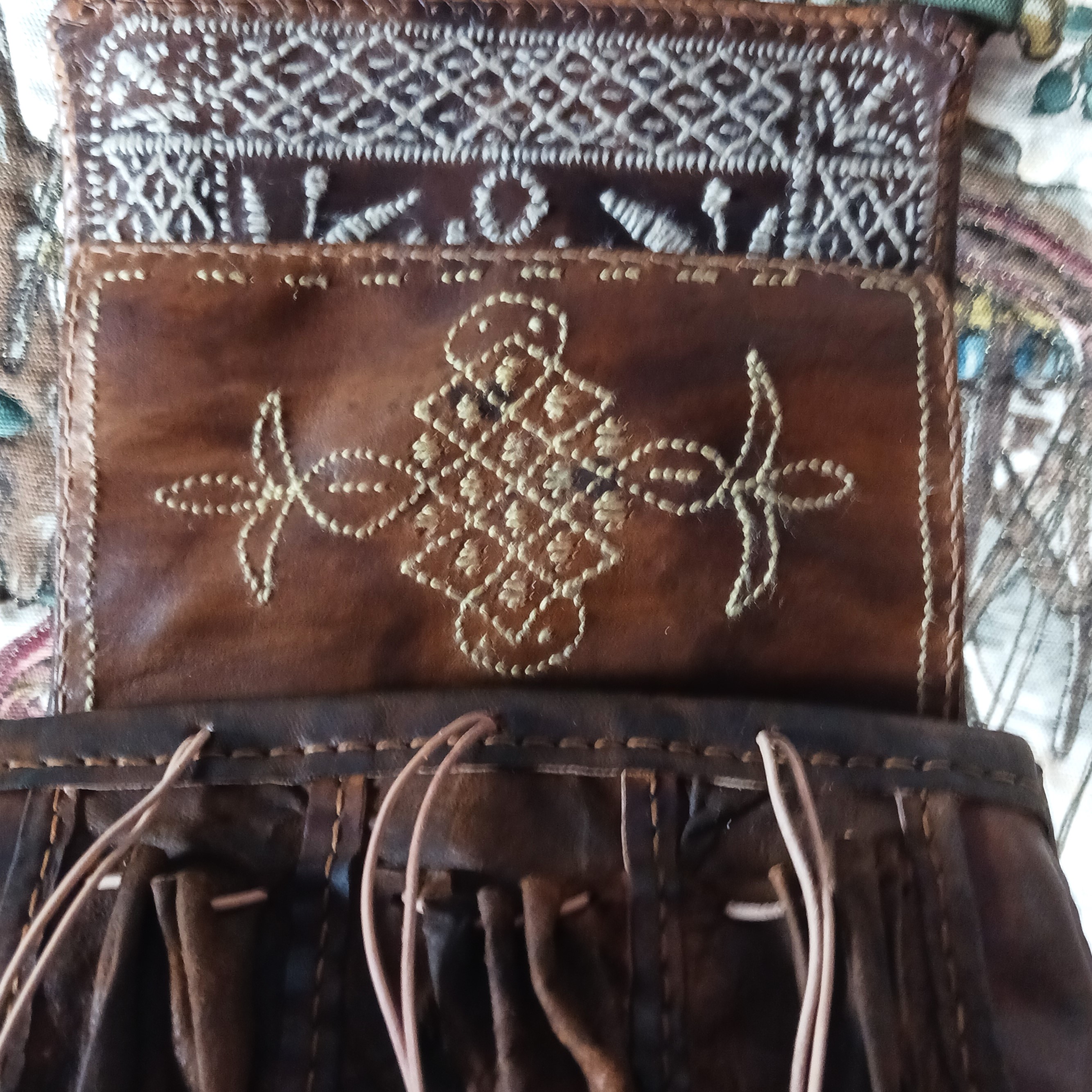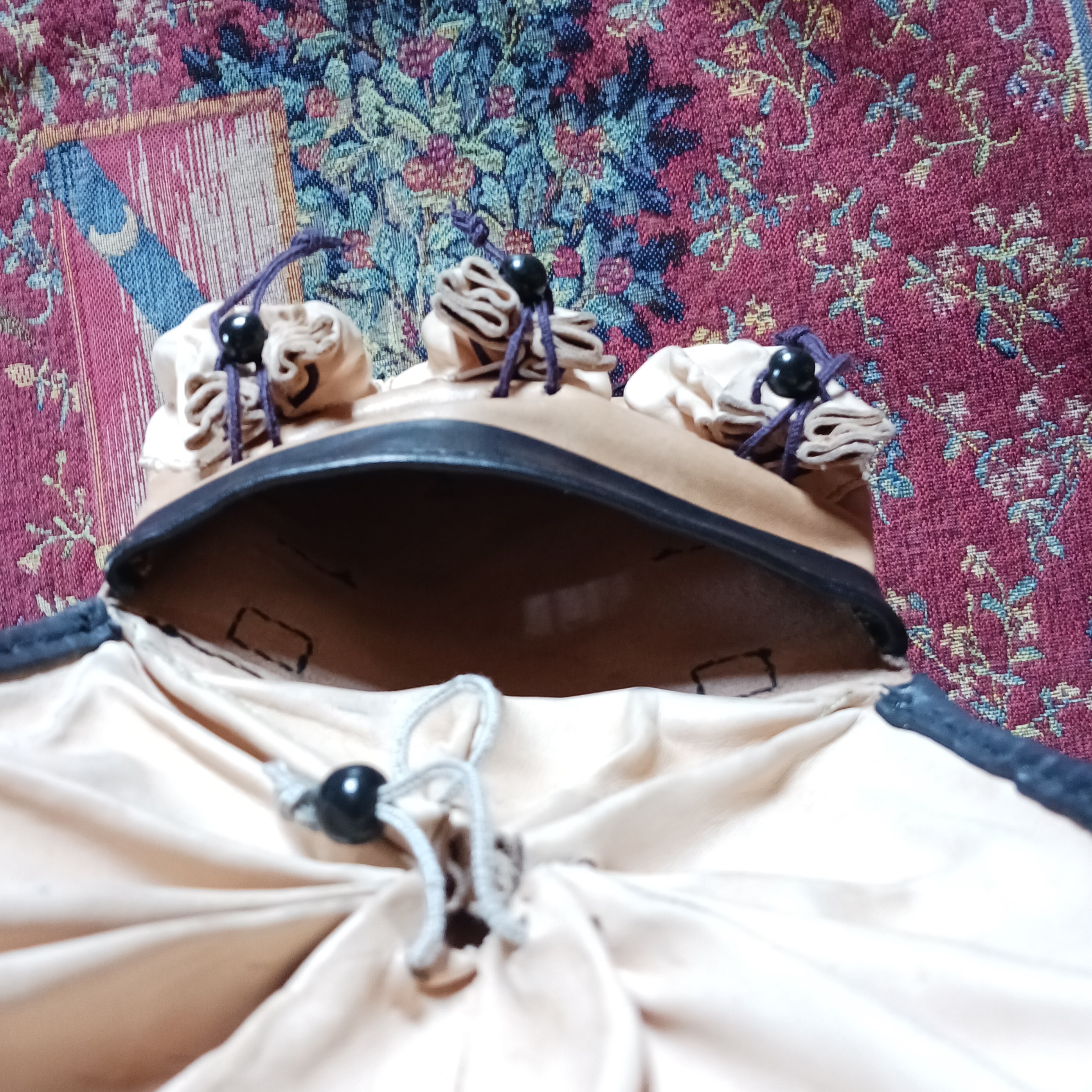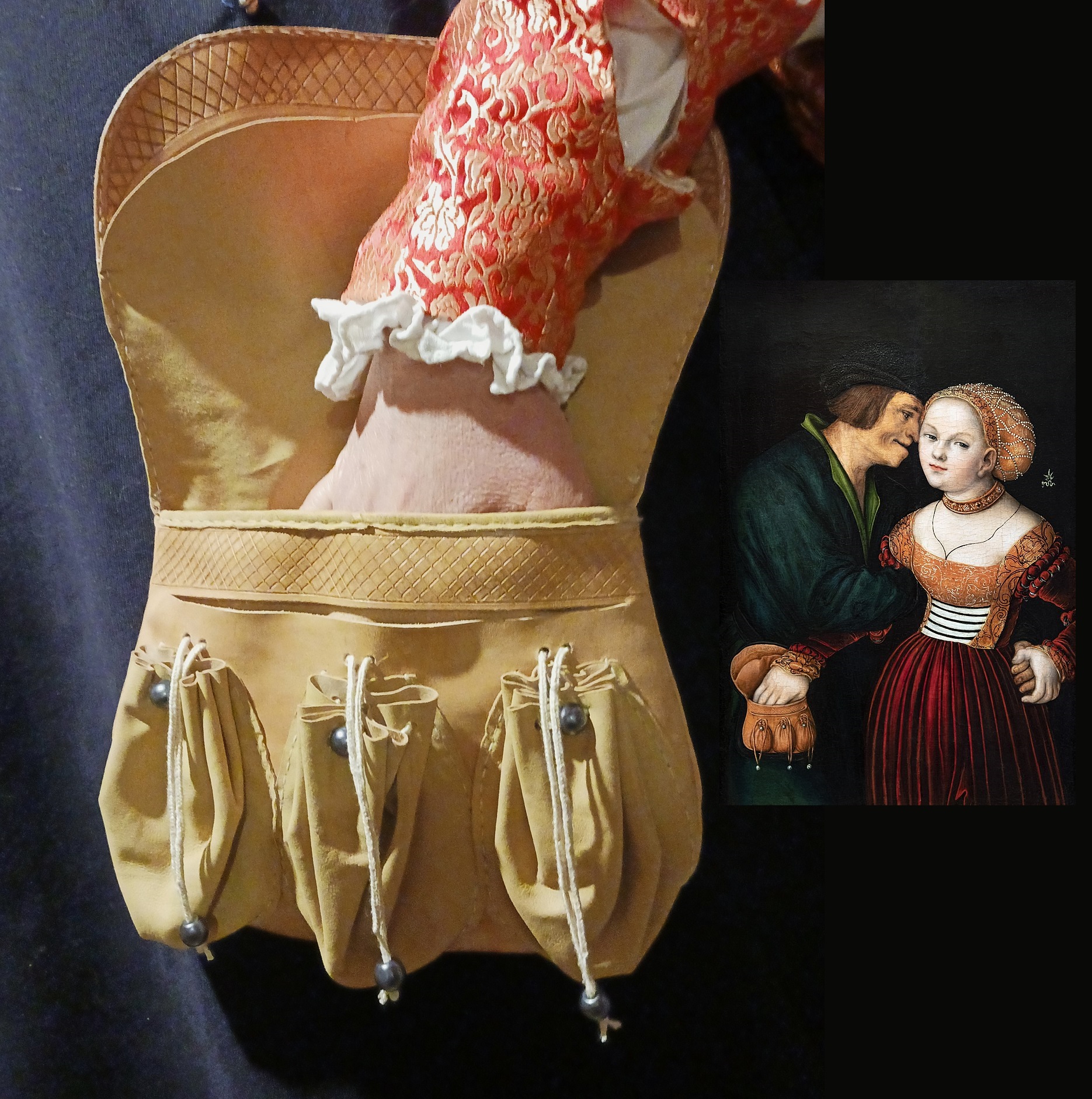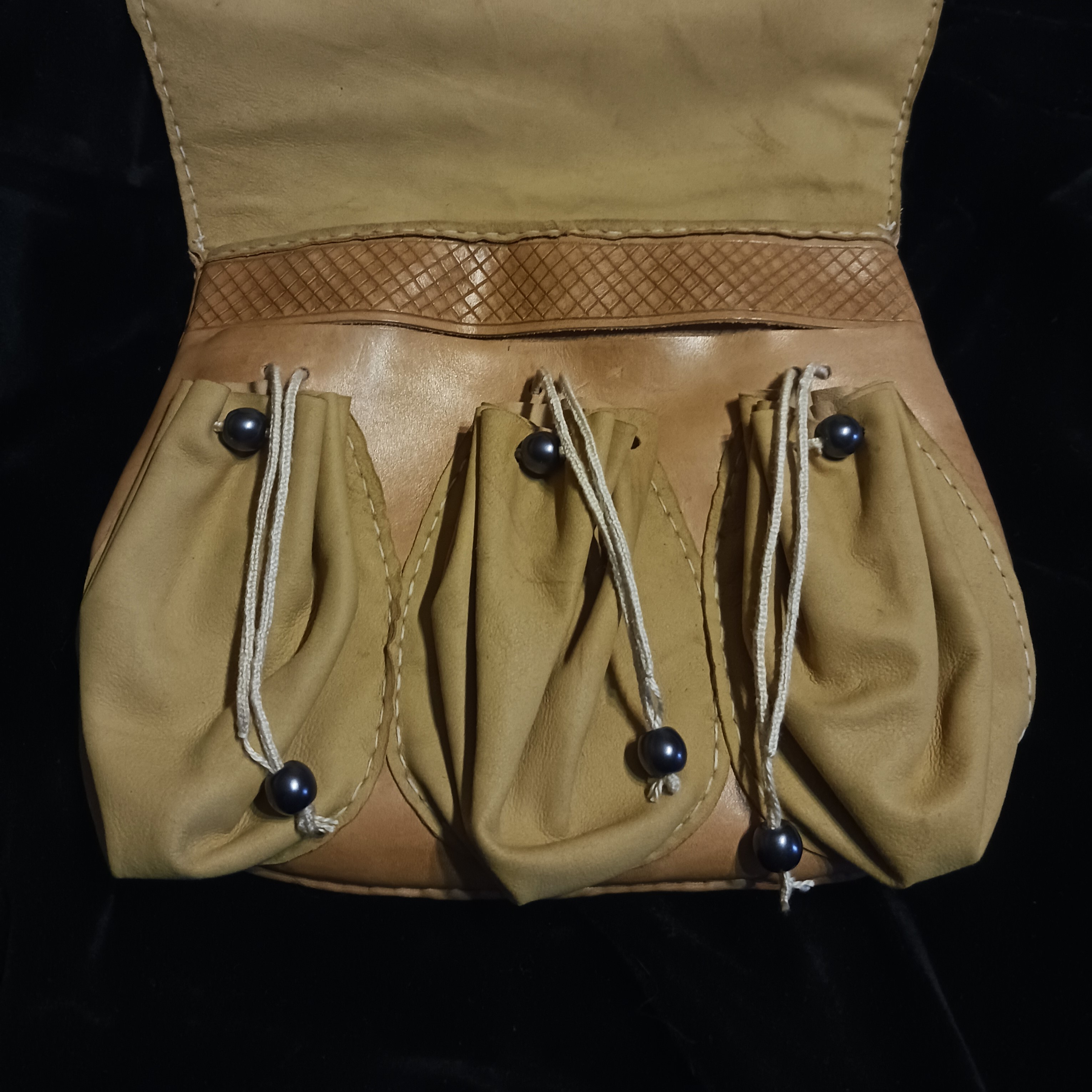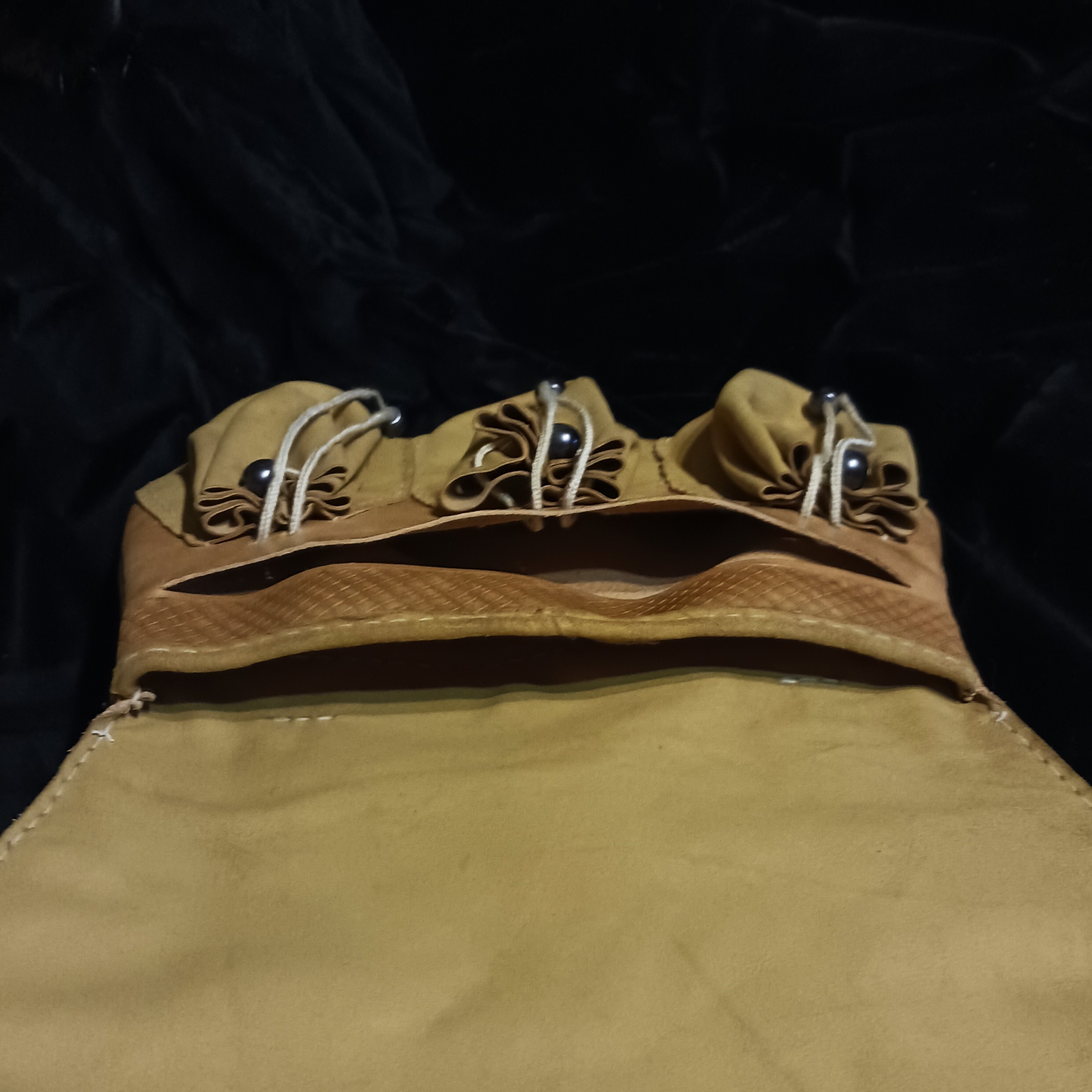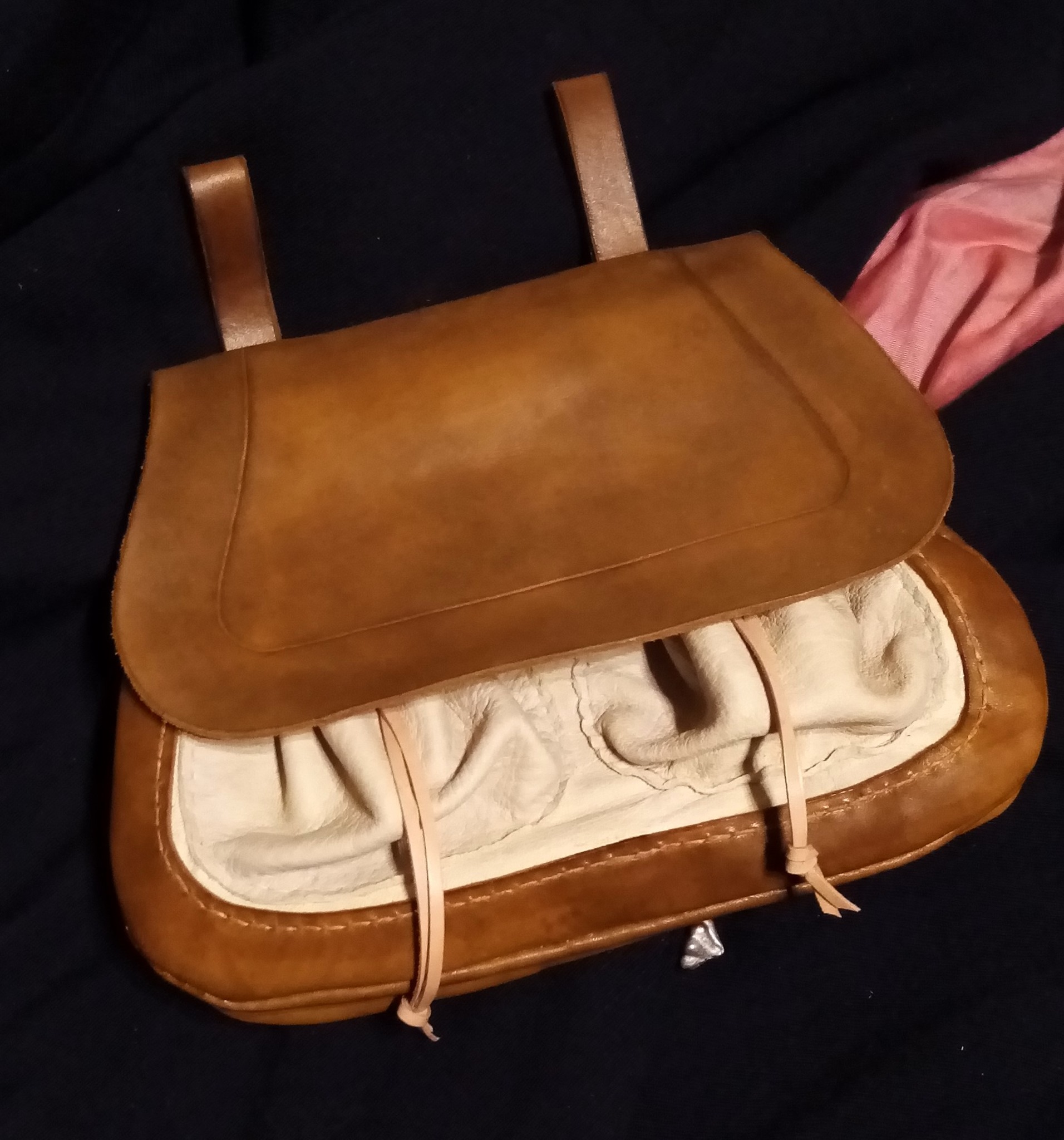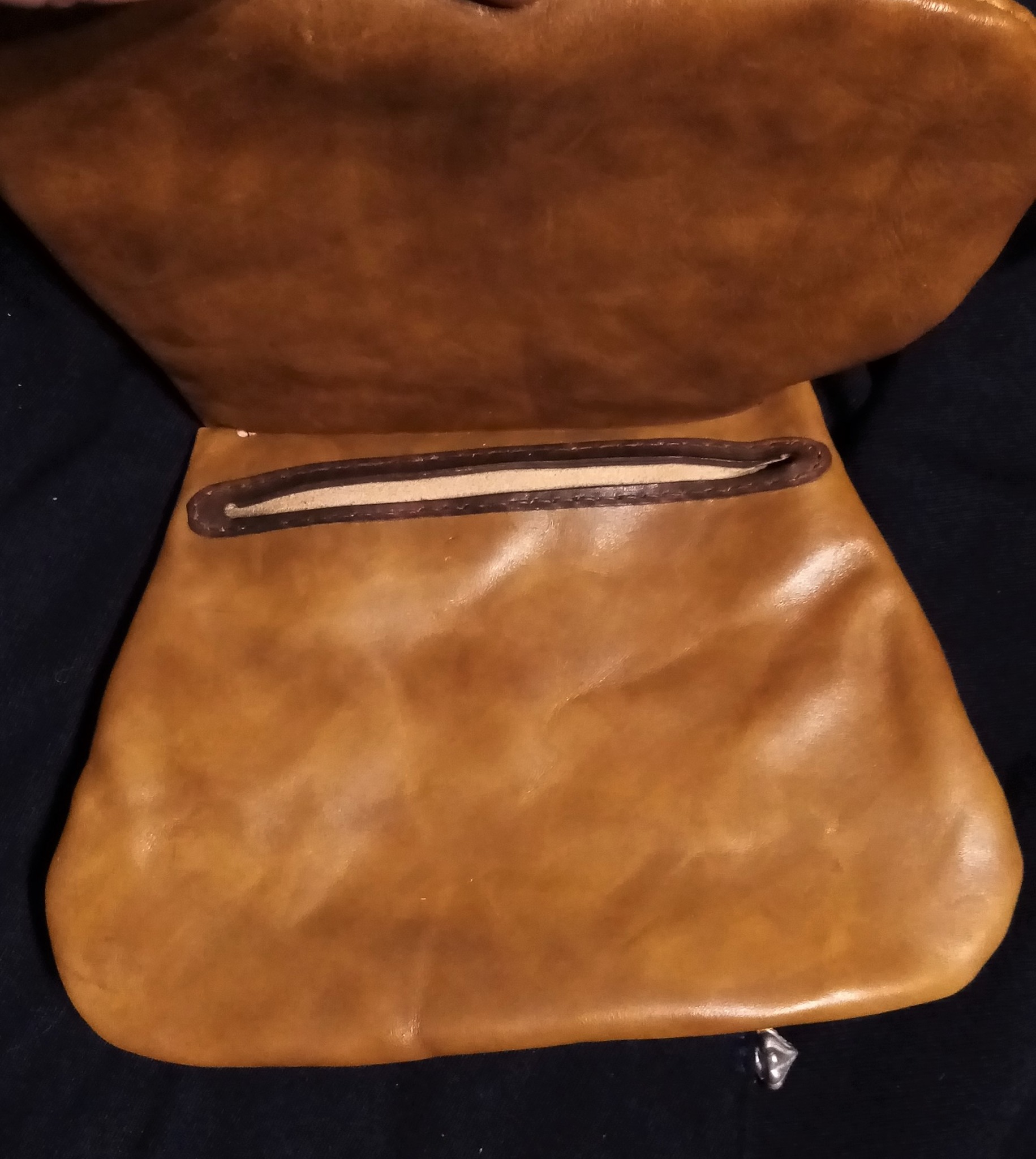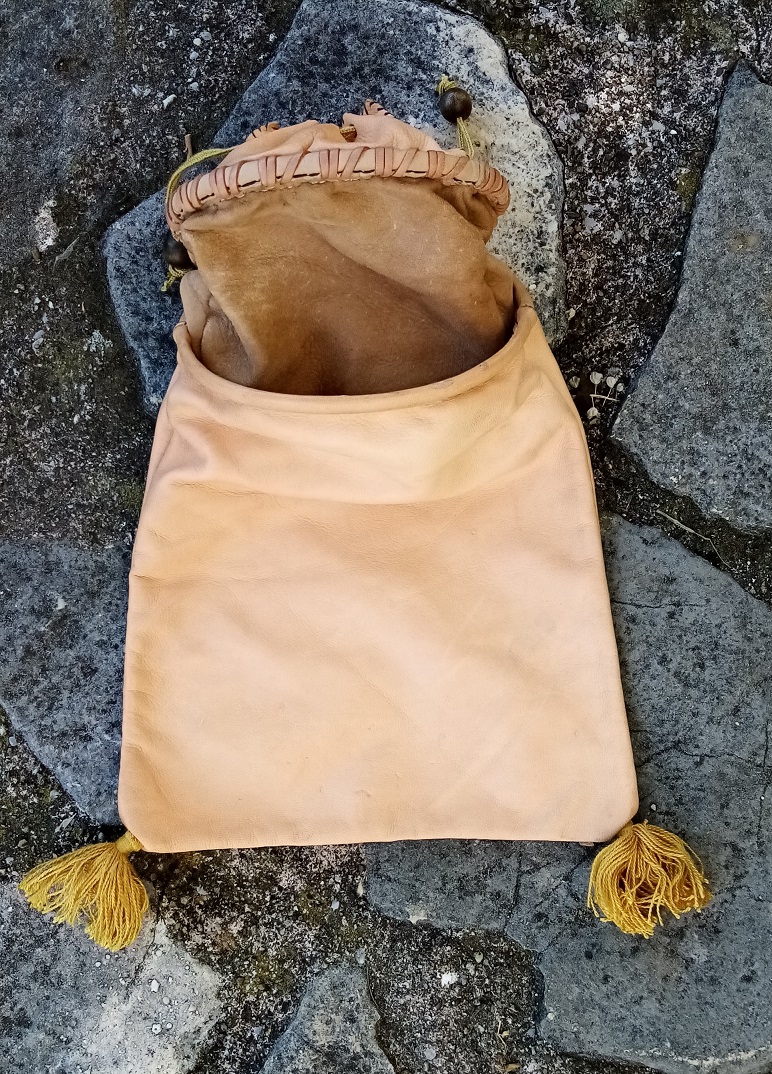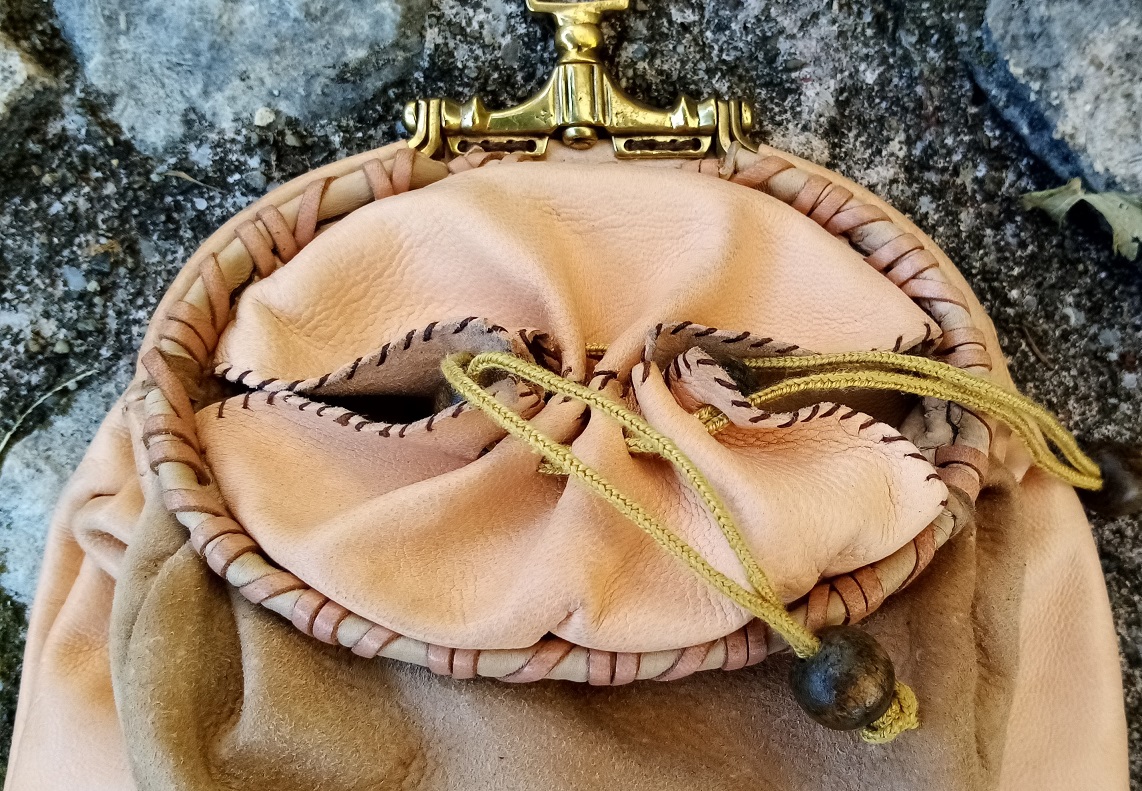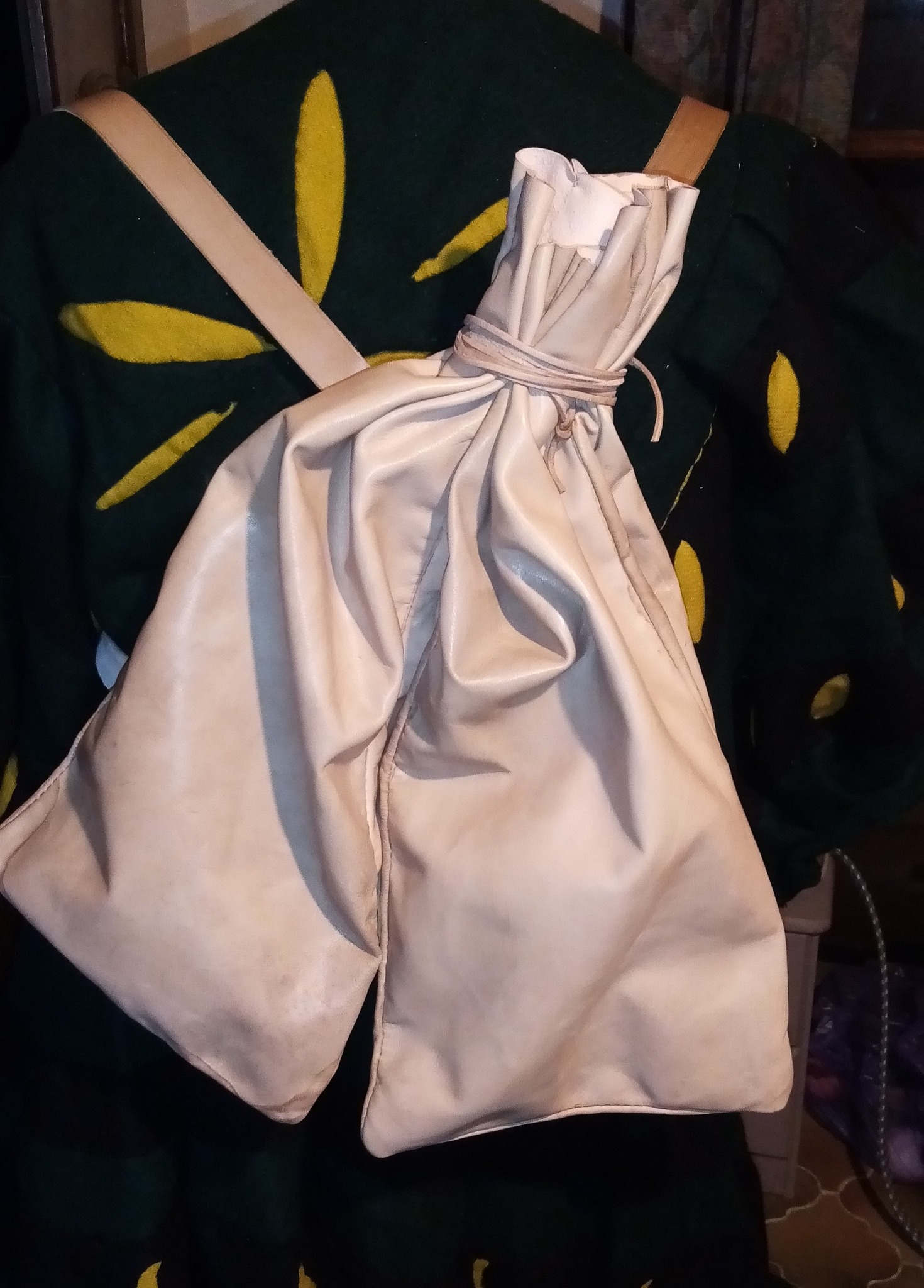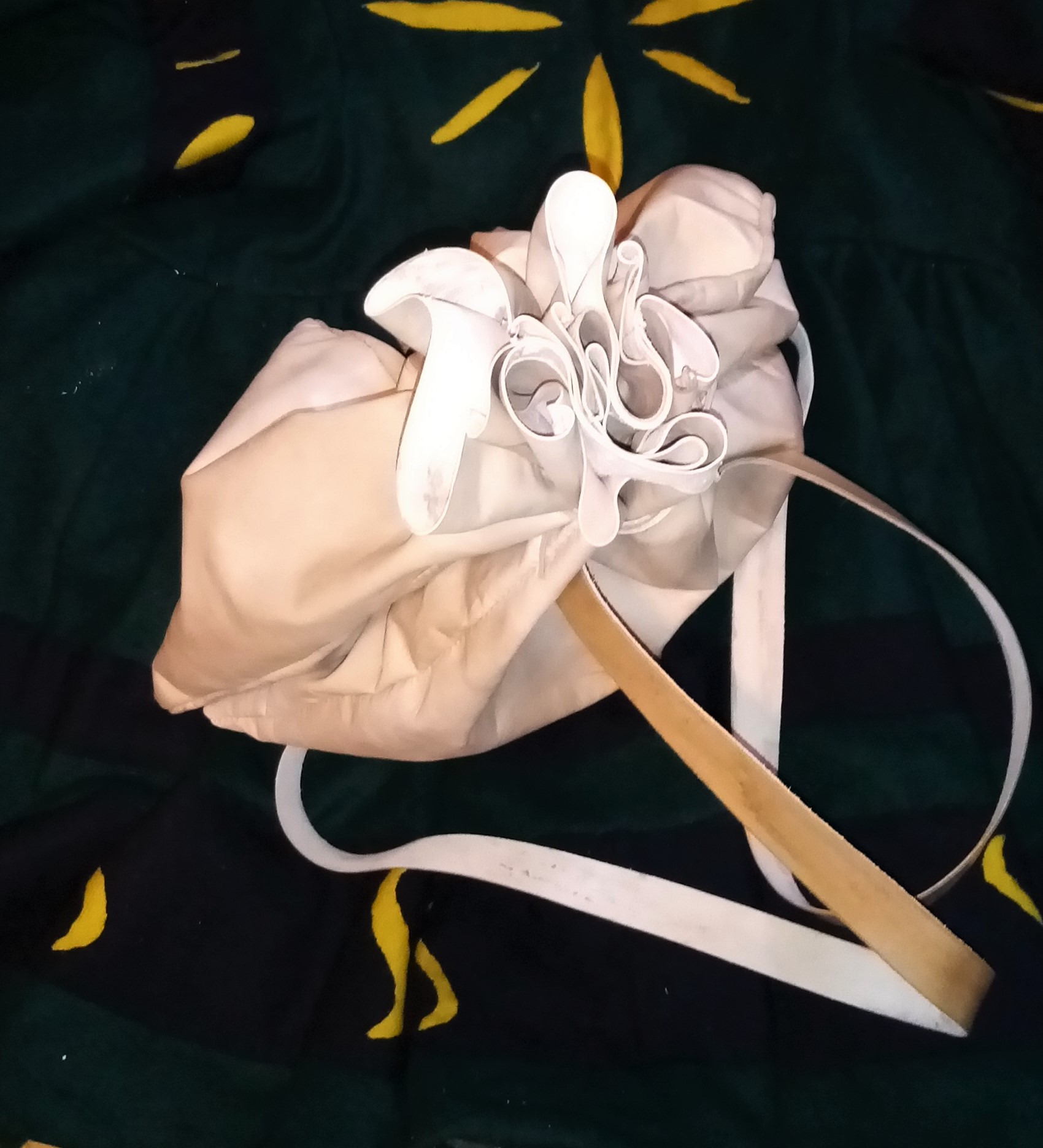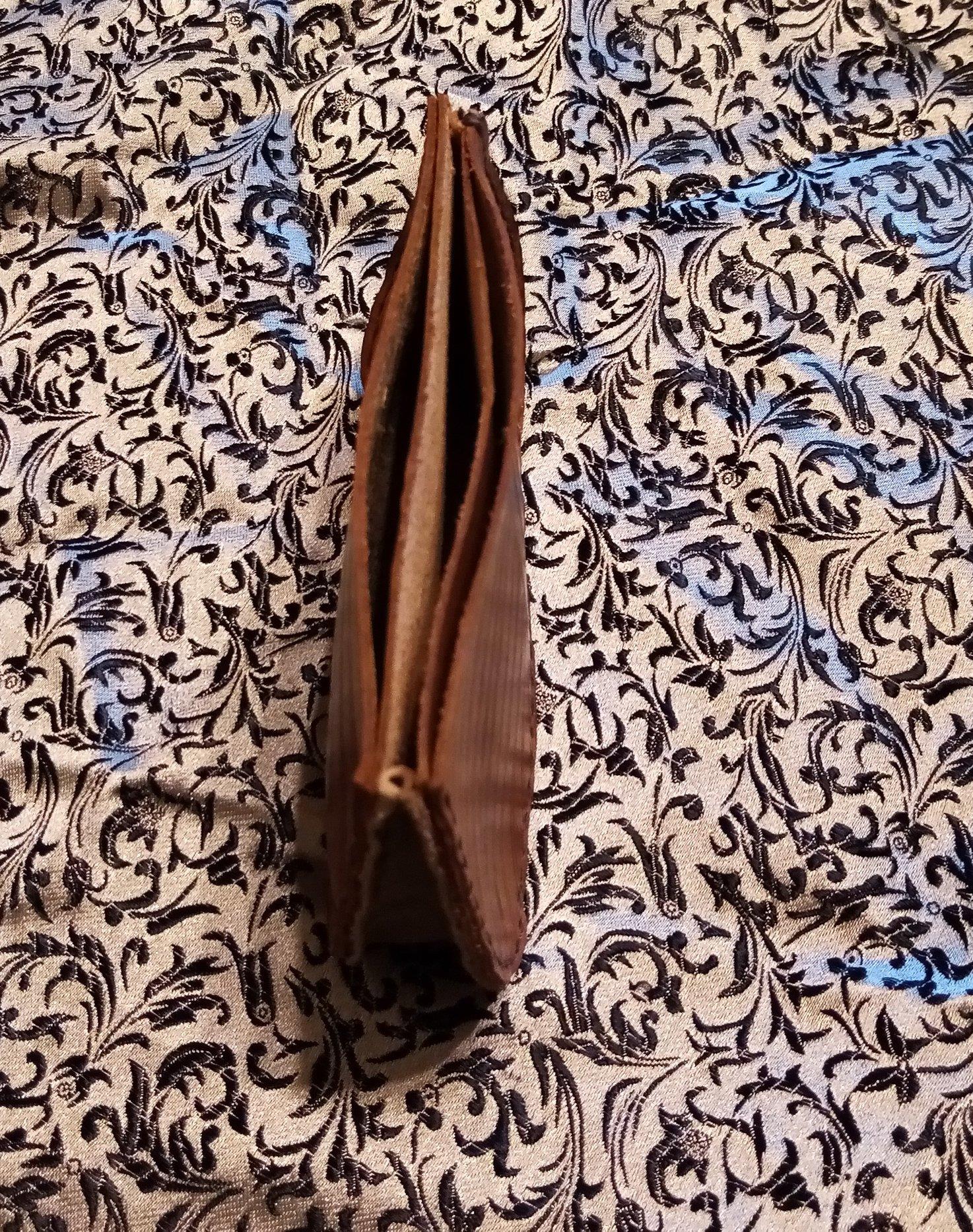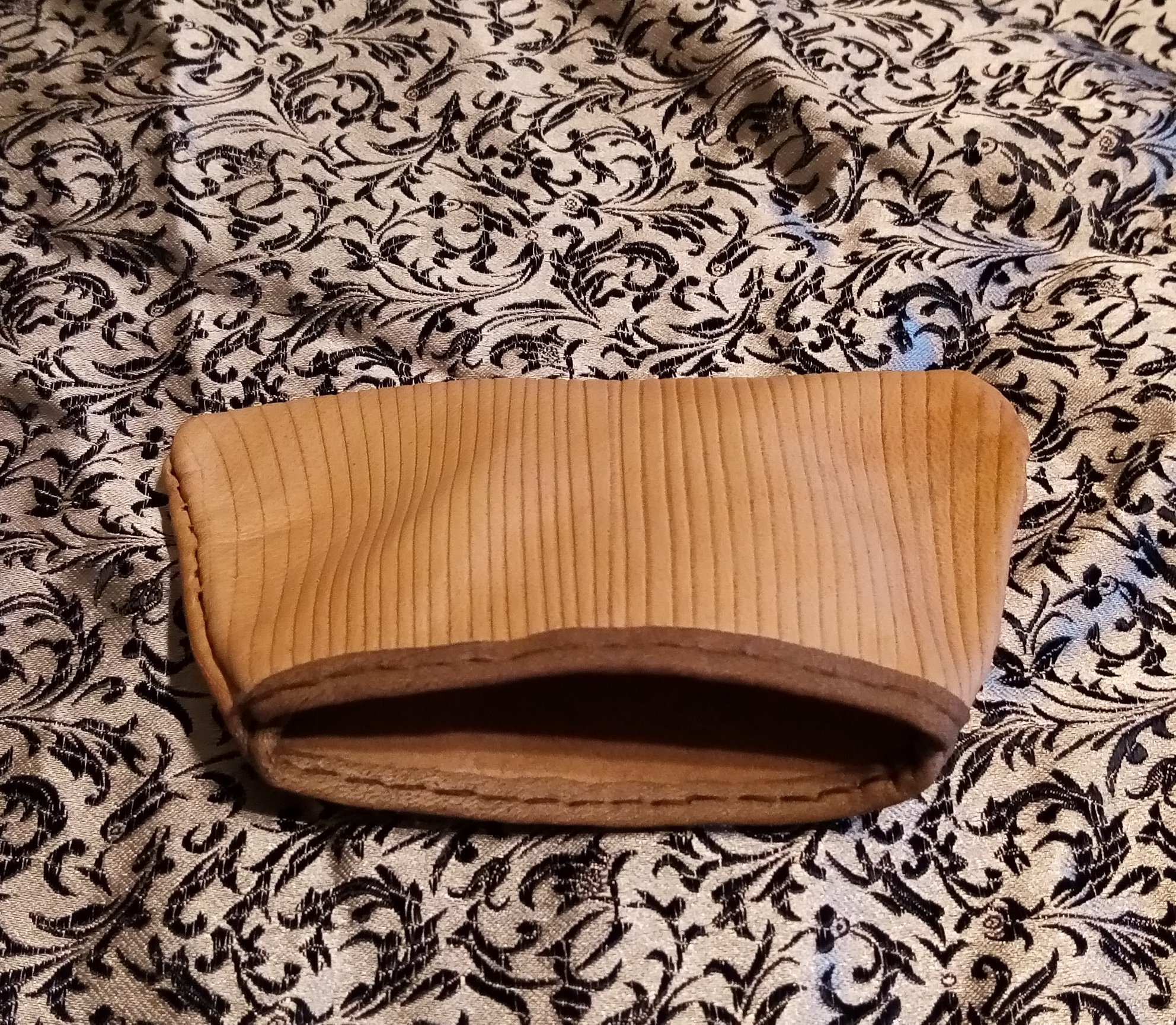XVIth century
"The beautiful sixteenth century" is remarkable for its intellectual and artistic renewal. Great painters left us an invaluable heritage, new continents have been discovered. The dress style evolves and differs according to the country or religious affiliation.
Period's categories
Rapier Scabbard and Holder
Leather boxes
3 compartments needle case En stock
A needle box, reproduction of an excavation piece from Utrecht (Netherlands) from the 16th century! Its particularity is that it contains 3 compartments of different sizes in order to distinguish the types of needles used. The 3 compartments were boiled, glued and assembled with a piece of leather. Everything was also dressed in boiled lambskin and shaped throughout! It’s an unusual and unique piece that I suggest you acquire today, ladies and gentlemen. Dimensions: Diameter 2.5cm, Height 10cm Price : 200€
Playing cards game leather box
XVIth century playing card game leather box made with 2 vegetable tanned leather layers. The pattern is based on a XVIth century French leather box, the representation of the card on the lid comes from the game itself. All the patterns were incised with knife then dyed with a fine paintbrush: mahogany, light blue, black, red, green alcohol dyes; white and gold acrylic dyes. Waxed linen thread sewing Dimensions: Height 9cm, Width 8cm, Depth 6,5cm
XVIth century scabbards
Bauernwehr and embossed scabbard En stock
Bauernwehr scabbard. The pattern was embossed entirely by hand from a woodprint of a 16th century scabbard. Light walnut husk dyeing, sewing with sticky linen thread, hanging braided loop and pompoms in vegetable-dyed raspberry wool (Micky's workshop) Price : 320€
Knife with embossed sheath
16th century knife (by Tod Cutler) and its sheath. The pattern on the sheath is largely inspired by an Italian excavation piece. Tunnel stitching with waxed linen thread on the back of the sheath. Historical iron oxide black dyed. Suspension cord in vegetable dyed blue silk braided loop (L'atelier de Micky) Dimensions of the sheath: Length 17.5cm, Width 3cm Knife dimensions: Total length 21cm, Cutting length 9cm
Ear dagger sheath
Sheath made from a painting by Fernando Gallego, The Adoration of the Magi period 1480-1490. 1.5mm vegetable tanned leather for the scabbard, 2.5mm for the puck. The patterns were made by incision, embossing and 1mm diameter point stamping Manual sewing with waxed linen thread, black dying . Dimensions: total length about 30cm, sheath width 3cm wide, diameter of the puck 5cm, height about 3cm.
XVIth century Purses
The Mary Rose purse
Here is my interpretation of the girdle purse of The Mary Rose! Within a fabulous collection belonging to the warship of the same name which sank in 1545, it is this model among 3 purses that I wanted to reproduce. The purse has no less than 4 panels finely embroidered with silk thread. It's 30m of vegetable-dyed buckthorn silk thread (Micky's workshop), more than 25 hours of embroidery on leather with holes pierced at 1mm intervals. Vegetable tanned bovine leather for the body, goat leather for the purses. 2 main pockets and an insert with 3 purses. Dimensions: Height 15cm, Maximum width 18cm With more than 30 hours of work on this project, the price is accordingly but you are sure to acquire a master piece worthy of a collector!
Cranach the younger girdle purse En stock
A quite atypical purse with its fringes, reproduced from an oil on wood attributed to Cranach the Younger. Given the style of painting very similar to his father's, it is very likely that this painting was painted when Cranach the Younger was helping his father in the workshop, the dating would therefore be at most between 1530 and 1535. The purse is entirely made of bovine leather for the pocket and the flap and lambskin for the purses and the main purse. The braided closure cords are in vegetable-dyed silk (L'atelier de Micky) Dimensions: Width 22cm, Height (with fringes) 22cm Price : 350€
Cranach purse
Reproduction of a purse visible in the painting by Cranach the Elder "The Lovers" This purse was made with vegetable tanned cow and lamb leather. The somewhat unusual construction required sewing 3 layers inside out The purses are closed with braided loops of vegetable-treated silk thread and glass beads.
Double pouche girdle purse
atypical purse, reproduction of an early 16th century engraving with two large pockets and 2 coin purses. I tried to reproduce it as faithfully as possible. Use of vegetable tanned leather for the entire purse and 1mm thick calfskin for the insert and the purses, which allows a good flexibility to this set. The wetted and shaped pocket holds firmly in position despite the flexibility of handling. Patinated hazelnut brown dye, stitching with waxed linen thread
Kampfrau purse
Purse for women (late 15th, 16th century) reconstructed from a Dordrecht excavation piece (sketch in the book Purses in pieces) Made of 1mm thick goatskin and upturned lambskin, the two purses are articulated around a double ring with a brass suspension The more technical part was the assembly of the two pockets on the double ring (waxed linen thread for the sewing and natural leather lace to keep the pocket on the internal ring) The pompoms and the tightening braided loops are in yellow vegetable dyed silk Dimensions: Total height 28cm, Width 22cm
Landsknecht Purse
Here is a typical 16th century purse. I made it based on a Landsknecht illustration. I adapted the construction to technical constraints, the illustration being a bit fanciful for the meaning of the closures. This is the Landsknecht motto : "Al mein Gelt verspilt" (all my money has been wasted) in other words "Everything is temporary". The dye is a historic recipe based on iron oxide. Brass buckles and purse mounts. Dimensions: Height 20cm, Width 20cm, straps height 5cm
miscellaneous XVIth century
3 pouches backsack
Rather original backpack with three pockets, reproduction of an engraving from the collection "Hunting clothes of Maximilian 1st". I deliberately reproduced it in goat leather. The bag has 3 compartments entirely sewn by hand with waxed linen thread and linked together. A single leather lace closes the 3 pockets. Light walnut stain. Non-adjustable carrying straps sewn on the rear bag. Height 50cm, Width about 45cm flat
Wallet #2 En stock
These wallets could contain notes, bills of exchange and a few coins at best. Their small thickness made it possible to store them practically on oneself; today this accessory will allow you to store it in your purse or chaplain with your identity papers and credit card without clutter. These pieces are suitable for both women and men. Source early 16th century Middleburg This model has three pockets, one with a central gusset. Made of vegetable tanned leather and goat leather for the gusset. Golden brown color Dimensions 12cm X 7cm Price: 35 €
Wallet #1 En stock
These wallets could contain notes, bills of exchange and a few coins at best. Their small thickness made it possible to store them practically on oneself; today this accessory will allow you to store it in your purse or chaplain with your identity papers and credit card without clutter. These pieces are suitable for both women and men. Source early 16th century Middleburg: this model is a kind of wallet. Made from goatskin washed with linseed oil. Dimensions 12cm X 7cm Price: 30 €



